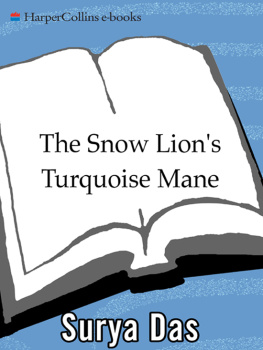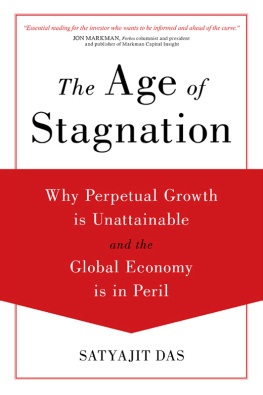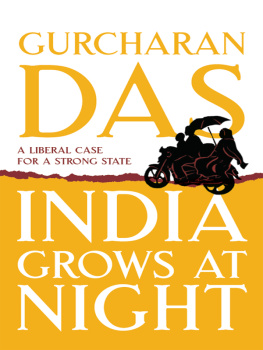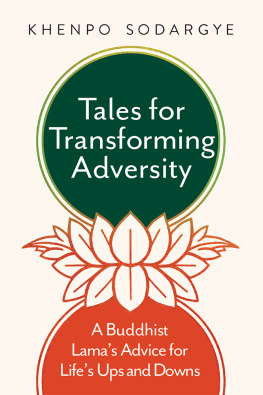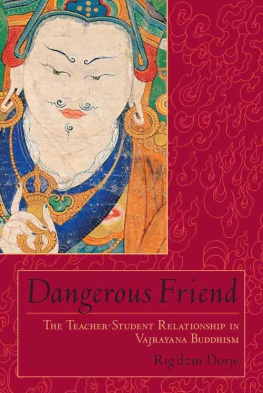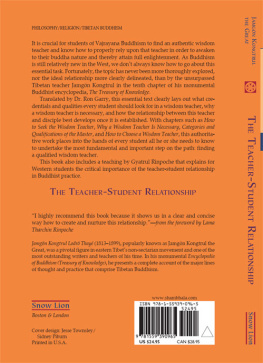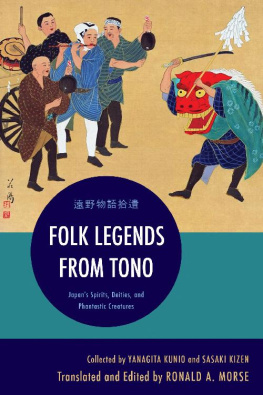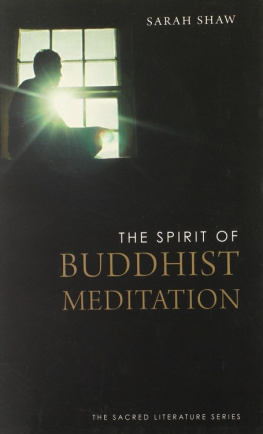Das - The Snow Lions Turquoise Mane
Here you can read online Das - The Snow Lions Turquoise Mane full text of the book (entire story) in english for free. Download pdf and epub, get meaning, cover and reviews about this ebook. year: 2014, publisher: HarperCollins e-Books, genre: Detective and thriller. Description of the work, (preface) as well as reviews are available. Best literature library LitArk.com created for fans of good reading and offers a wide selection of genres:
Romance novel
Science fiction
Adventure
Detective
Science
History
Home and family
Prose
Art
Politics
Computer
Non-fiction
Religion
Business
Children
Humor
Choose a favorite category and find really read worthwhile books. Enjoy immersion in the world of imagination, feel the emotions of the characters or learn something new for yourself, make an fascinating discovery.
- Book:The Snow Lions Turquoise Mane
- Author:
- Publisher:HarperCollins e-Books
- Genre:
- Year:2014
- Rating:3 / 5
- Favourites:Add to favourites
- Your mark:
- 60
- 1
- 2
- 3
- 4
- 5
The Snow Lions Turquoise Mane: summary, description and annotation
We offer to read an annotation, description, summary or preface (depends on what the author of the book "The Snow Lions Turquoise Mane" wrote himself). If you haven't found the necessary information about the book — write in the comments, we will try to find it.
The Snow Lions Turquoise Mane — read online for free the complete book (whole text) full work
Below is the text of the book, divided by pages. System saving the place of the last page read, allows you to conveniently read the book "The Snow Lions Turquoise Mane" online for free, without having to search again every time where you left off. Put a bookmark, and you can go to the page where you finished reading at any time.
Font size:
Interval:
Bookmark:
by His Holiness Dilgo Khyentse Rinpoche
by His Holiness the Dalai Lama
by Daniel Goleman
An Old Ladys Advice
I wish to acknowledge gratefully the generous assistance and encouragement of Nyoshul Khenpo Rinpoche, as well as the Padmakara International Translation Group in France and Daniel Goleman of the New York Times .
Many of these teaching tales were told to me by Nyoshul Khenpo Rinpoche, a Tibetan lama and an inexhaustible mine of Buddhist wisdom and lore. Others were recounted by contemporary Buddhist scholars and masters, including His Holiness Dudjom Rinpoche, His Holiness Dilgo Khyentse Rinpoche, Mahapandita Dezhung Rinpoche, and the Venerable Tulku Pema Wangyal, each of whom contributed several. Still others were passed on by the Very Venerable Kalu Rinpoche, Drukpa Thugsay Rinpoche, His Holiness Gyalwang Drukchen, Khenpo Thrangu Rinpoche, His Eminence Shamar Rinpoche, Khenpo Tsultrim Gyamtso, Khenpo Karthar, Orgyen Tobgyal Rinpoche, Chkyi Nema Rinpoche, Shenphen Dawa Rinpoche, Khetsun Zangpo Rinpoche, Tulku Thondup, Lama Norlha, Lama Sonam Tobgyal, Lama Thubten Yesh, and Gelong Konchok Tenzin. Charles Hastings, Janis Jolcuvar, Jakob Leschley, Anandi Friend, Chaitanya Samways, and Tara Bennett-Goleman also contributed helpful editorial assistance. My gratitude and respects are offered to one and all.
Any and all merits accumulated through this work I dedicate to the longevity of these compassionate lamas, yogis, and spiritual friends and to the continuance of their teachings.
Sleeping Buddhas, Awaken!
So, Rinpoche, she asked, if these grand old living Buddha-lamas are as perfectly enlightened, awakened, omniscient, skillful, powerful, and compassionate as we think they are, why dont they just wake us up from the sleep of delusion?
Whos asleep? the master replied.

April 10, 1991
Hearing or reading the biographies of illumined spiritual masters teaches us their wisdom and enlightened way of life. Through such inspiration, heart and mind inevitably turn toward the sublime Dharma, ultimately to become transformed; thus ones life becomes meaningful.
Under the guidance of Nyoshul Khenpo Rinpoche and Venerable Tulku Pema Wangyal, my disciple Surya Das has gathered these oral tales from many of his spiritual teachers, including the great living Tibetan lamas of all four schools of Tibetan Buddhism. Many of these stories concern the compassionate teachings of the remarkable nineteenth-century Dzogchen master Patrul Rinpoche, whose songs, pith-instructions (whispered oral guidance from master to disciple), commentaries, and life-style remain a constant source of inspiration today, as well as other realized sages and yogis of the non-sectarian practice lineage. Others concern simple folk, whose experience exemplifies how anyone can benefit from the spiritual path.
Simply to hear of the lives of such living Buddhas can bring one onto the path of liberation. May this work be a source of spiritual blessings and inspiration to all.

Dilgo Khyentse Rinpoche

THE FOURTEENTH DALAI LAMA
Spiritual teachers have universally used stories to illustrate their teachings, and the lamas of Tibet are no exception. Tibetans have tremendous respect for all things religious, especially the literary tradition and those who embody it. We set great store by the written word, particularly the scriptures translated from Indian sources, as well as those later composed by Tibetan masters themselves in the Land of Snow.
However, Tibetans sense of respect has a healthy balance to it. Colored by a direct earthy humor, it does not often sink into mere sanctimoniousness. Figures like the saintly poet Milarepa, the Kadampa Gesh Ben, and more recently the great Dzogchen master Patrul Rinpoche, are much loved for the stories of their antics. Yet because these people were incomparable spiritual practitioners, these accounts invariably provide a vivid example for others to follow.
Many such stories have never been written down, being simply passed on from teacher to disciple down the years in a living oral tradition. Surya Das has gathered a selection he has heard from lamas he has met and has retold them here in English. I am grateful to him for recording this delightful aspect of our tradition and trust that readers will enjoy them as much as generations of Tibetans have done.

The Dalai Lama
June 2, 1992
The south of France seems an unlikely setting for the transmission of the ancient wisdom of Tibet. But it is there, in the region of the Dordogne not far from the prehistoric caves that hold humanitys earliest known art, that masters of Tibetan Buddhism have built a forest hermitage where students from all over the world gather for traditional meditation retreats that last three years, three months, and three days.
And it is there that Surya Das, a wandering Jew from New York by way of Tibet, Nepal, and India, has found himself dedicating long years of his life to learning the spiritual practices of Tibet. At this writing, Surya was in the middle of his third three-year retreat.
As is true of so many good things, Surya Dass role as the recorder of these Tibetan tales came about unintentionally. In the fifth year of two back-to-back three-year retreats, one of Suryas teachers, Nyoshul Khenpo Rinpoche, asked him to write down stories about the early upholders of their lineage of teachings. The teacher wanted these tales of enlightenment collected and rendered in English so that they might be presented and inspire students in the West. Many of these stories have ended up in this collection.
As Surya recorded the tales, he realized that for over twenty years he had heard many, many stories but that only a few still remained clearly in mind. So he started to collect Tibetan teaching tales, the oral stories that Tibetan masters have always told as part of their bountiful transmission of wisdom and compassion. Many of the tales in this collection, as part of this centuries-old oral tradition, have never been written down before.
The tales captured here for us are glimpses of a living spiritual flame that is passed on from teacher to student in the tantric tradition. In this tradition, it is important that the student hear the tantras directly from the master in order for the living essence of the teaching, the Ihung, to be genuinely transmitted. This oral transmission forms a chain that leads back through the centuries.
While reading these tales is not the same as hearing them told aloud, we can still receive from them a deep richness. Even on paper, the point of a tale is still the point; moreover, it is taught that simply to contact them sows the seeds of liberation.
They come to us at a particularly ripe time in our own cultural evolution. As the very earth and skies reel from the effect of a shallow, materialistic ethic that venerates the short term and unleashes technology without regard for consequence, more and more people in the West are searching for a larger perspective, a timeless wisdom. This perspective is to be found here in abundance.
Font size:
Interval:
Bookmark:
Similar books «The Snow Lions Turquoise Mane»
Look at similar books to The Snow Lions Turquoise Mane. We have selected literature similar in name and meaning in the hope of providing readers with more options to find new, interesting, not yet read works.
Discussion, reviews of the book The Snow Lions Turquoise Mane and just readers' own opinions. Leave your comments, write what you think about the work, its meaning or the main characters. Specify what exactly you liked and what you didn't like, and why you think so.

